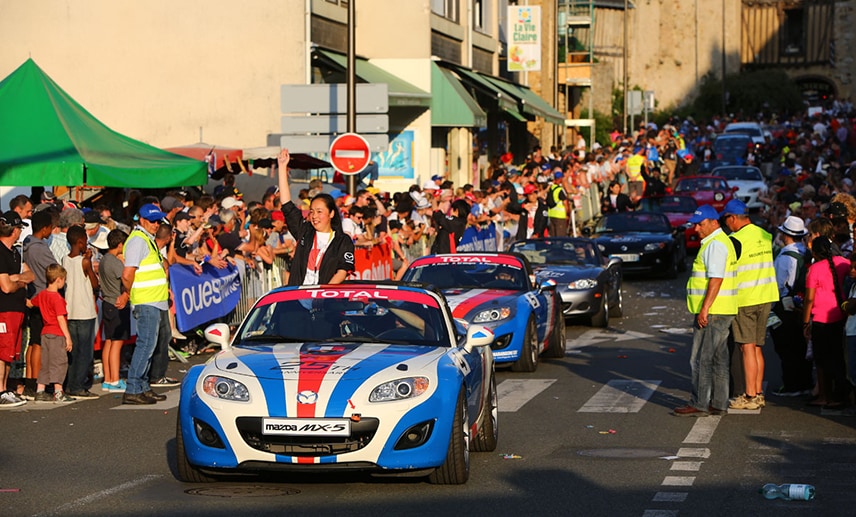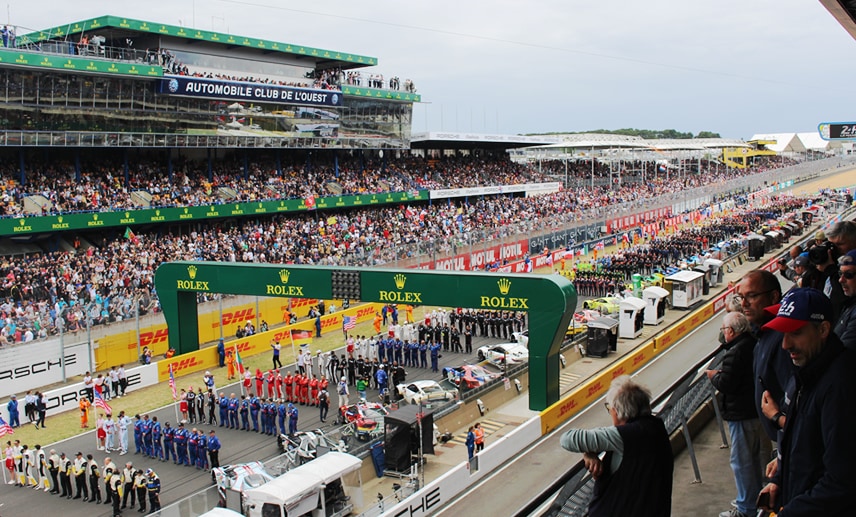Support Our Kids支援国
SUPPORT PUR KIDS SUPPORTING COUNTRIES

SUPPORTING COUNTRIES
フランス共和国
France
![]()
Le Mans24が、子ども達に伝えたレジリエンス。
それは、「飽くなき挑戦」と、「力を合わせること」の大切さ。
フランス研修は、ル・マン24時間耐久レース90周年大会(2013年)に併せてスタートしました。現役最多、29回ル・マン出場記録を持つレーシングドライバー寺田陽次郎氏と、広島で戦災からの復興を遂げ、日本メーカーとして唯一ル・マン優勝を遂げていたマツダ社の「困難に直面しても挑戦をやめないこと、力を合わせて乗り越えることを、ル・マンから学んでほしい」という想いから企画されました。
1周13.6kmにも及ぶル・マンのコースは、その3分の2が、普段は一般道として使われています。その為、選手やチームは大会に向けて本番コースで練習を重ねることは出来ません。且つ、そのロングコースゆえに、1周のコースの中に、晴れと雨が共存するなど、他のレースには無い困難がいくつも存在しています。その中を、最高時速300kmを超えるスピードで、24時間走り続ける戦いは、常に選手とチームにレジリエンスを求めます。
ル・マン24時間耐久レースが、子ども達に伝えたレジリエンス。それは、、、
日本人初の女性エンジニアとして、
ル・マンに日の丸を掲げたい。
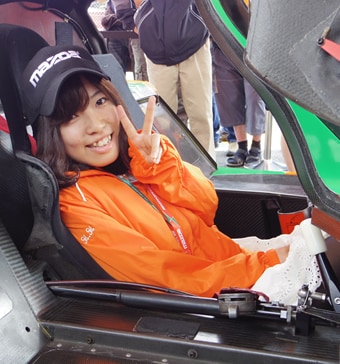 (半澤悠音/福島県/高校2年)
(半澤悠音/福島県/高校2年)
ル・マン24時間耐久レースを観戦させて頂き、私には夢ができました。それは、日本人初の女性エンジニアとしてピットに立ち、日の丸を掲げることです。負けても負けても挑戦し続け、日本車としてはじめて優勝したMAZDA787Bという車との、ル・マンでの出会いが震災後の私の背中を押してくれたように、今度は、私が誰かに感動や夢や希望を与えられる車を作りたい。いつか地元の福島にも車の工場を作り、復興の拠点としたい。そして、私も地元の工場で活躍したいと思います。
命をかけてもいい!と言えるようなものを見つけたい
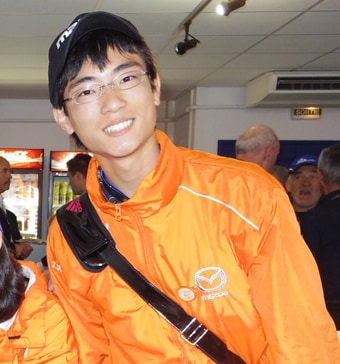 (宮城県/近藤智洋/高校2年)
(宮城県/近藤智洋/高校2年)
レース開始10分、目を背けたくなるような出来事が起きた。わずか2周目にして、激しくクラッシュし、アストンマーティンのアラン・シモンセン選手が亡くなってしまったのだ。大会終了後、24時間に渡る過酷な競技を終え熾烈な優勝争いを繰り広げた2チームが表彰台で喜ぶ一方、悲しみに暮れるアストンマーティン。同じ大会、同じ時間にスタートしたというのに、こうも明暗が分かれてしまうのかと、複雑な気持ちで表彰式を見ていた。大会期間中に、ル・マン市内やサーキットに漂う華やかな空気とは一線を画す、痛々しい出来事だった。私がこのことから学んだことは、全力で物事に取り組む大切さと、慢心を持たないことだ。一瞬の油断が命取りになるということを念頭に置きつつ、一方で、命をかけてもいい!と胸を張って言えるような熱中できるものを私も見つけたい。
ル・マンから学んだチーム力
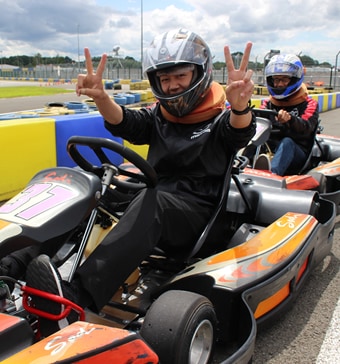 (菊田龍雅/福島県/中学3年生)
(菊田龍雅/福島県/中学3年生)
僕は、これまでレースの勝敗は、レーサーの技量によって決まると思っていました。しかし、「僕たちレーサーは、エンジニアの人たちがいなかったら走れない」というお話を聞き、その考えが間違っていたことに気づきました。実際、レース中には、ピット内でエンジニアの皆さんがチームを勝たせるために、一生懸命整備をしているところを見て、チームで必要とされるのは、個人の能力ではなく、団結力だと実感しました。これからチームで活動するときには、チームメイトに気を配って、団結力をより一層高めていきたいです。
The resilience that Le Mans 24 conveyed to the children:
The importance of being thirsty for challenges and working together.
The training program in France started in conjunction with the 90th anniversary of the Le Mans 24-hour endurance race in 2013. The program was organized through the efforts of racing driver Yojiro Terada, who has participated in Le Mans 29 times, the most by any active driver, and automaker Mazda, the only Japanese manufacturer to recovery after the war in Hiroshima and have won Le Mans. The program aims to let people learn from Le Mans to never stop challenging themselves even in the face of adversities, and to work together to overcome them. Two-thirds of the 13.6 km Le Mans course is normally used as public roads. So consequently, the racers and their teams cannot practice on the spot for their preparation for the race. In addition, because of the long course, there are certain factors and challenges like the occurrence of both sunshine and rain within one full circuit. The 24-hour race, running at speeds of over 300 km per hour, demands resilience from the racers and their teams. It is that resilience that 24 hours of Le Mans has passed on to the children.
I want to raise the flag of Japan and be the first Japanese female engineer at Le Mans.
 Haruka Hanzawa / Fukushima prefecture / 2nd year high school at that time
Haruka Hanzawa / Fukushima prefecture / 2nd year high school at that time
Watching the Le Mans 24-hour endurance race gave me a dream. That is, to be the first Japanese female engineer to stand in the pit and raise the Japanese flag at Le Mans. My encounter with the MAZDA 787B, the first Japanese car to win the race, pushed me and gave me the courage to move forward after the earthquake. I want to build a car that can give people inspiration, dreams, and hope. One day, I would like to build a car factory in my hometown in Fukushima and make it the base and center of the reconstruction. I also would like to play an active role in the local factory.
I want to find something where I can say
“I’m willing to risk my life for it!”
 Tomohiro Kondo /Miyagi prefecture / 2nd year high school student at that time
Tomohiro Kondo /Miyagi prefecture / 2nd year high school student at that time
Ten minutes after the race started, an incident occurred that made me want to turn my back on it: after the third lap, a violent crash killed Aston Martin driver Allan Simonsen. At the end of the race, the two teams that had fought so hard for the victory after 24 hours of grueling competition were rejoicing on the podium, while Aston Martin was in sadness. It was with mixed feelings that I watched the awards ceremony, wondering how the two teams could be so different even though they started at the same time in the same event. It was a painful event, a stark contrast to the glamorous atmosphere that prevailed in Le Mans and on the circuit. What I have learned from it is the importance of giving your best and not being too proud. A moment of carelessness can prove to be fatal, but at the same time you must be willing to risk your life. On the other hand, I would like to find something that I can be passionate about, something that I can say with pride “I’m willing to risk my life for it!”
What I learned about teamwork from Le Mans.
 Miki Kikuchi / Miyagi Prefecture / 2nd year high school student at the time
Miki Kikuchi / Miyagi Prefecture / 2nd year high school student at the time
I used to think that victory or defeat in a race was determined by the skill of the racer. However, I realized that I was wrong when I heard someone say, “We racers would not be able to run without the engineers.” In fact, during the race, I saw the engineers in the pit working hard to maintain the car so that the team could win, and I realized that what is needed in a team is not individual ability, but unity. From now on, when I work in a team, I want to pay attention to my teammates and further enhance our unity.
SUPPORTING
COUNTRIES
![]()
SUPPORTING COUNTRIES
ニュージーランド
New Zealand
![]()
SUPPORTING COUNTRIES
フランス共和国
France
![]()
SUPPORTING COUNTRIES
アイルランド
Ireland
![]()
SUPPORTING COUNTRIES
カナダ
Canada
![]()
SUPPORTING COUNTRIES
オーストラリア連邦
Australian Federation
![]()
SUPPORTING COUNTRIES
スイス連邦
Switzerland
![]()
SUPPORTING COUNTRIES
グレートブリテン及び
北アイルランド連合王国
United Kingdom of Great Britain and Northern Ireland
![]()
SUPPORTING COUNTRIES
アメリカ合衆国
United States of America
![]()
SUPPORTING COUNTRIES
サンマリノ共和国
Republic of San Marino
![]()
SUPPORTING COUNTRIES
ポーランド共和国
Republic of Poland
